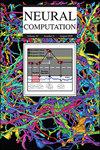闭环多步骤规划。
IF 2.1
4区 计算机科学
Q3 COMPUTER SCIENCE, ARTIFICIAL INTELLIGENCE
引用次数: 0
摘要
生物体以闭环方式与周围环境相互作用,其中感官输入决定行为的开始和结束。即使是简单的动物也能够制定和执行复杂的计划,这在使用纯闭环输入控制的机器人中还没有被复制。我们提出了一种解决方案,通过定义一组离散和临时的闭环控制器,称为“任务”,每个任务代表一个闭环行为。我们进一步介绍了一个对物理和因果关系具有天生理解的监督模块,通过它可以模拟任务序列随时间的执行,并将结果存储在环境模型中。在此模型的基础上,可以通过串联临时闭环控制器来制定计划。我们提出的框架在机器人上实现,并在两个场景中进行了测试,作为概念验证。本文章由计算机程序翻译,如有差异,请以英文原文为准。
Closed-Loop Multistep Planning
Living organisms interact with their surroundings in a closed-loop fashion, where sensory inputs dictate the initiation and termination of behaviors. Even simple animals are able to develop and execute complex plans, which has not yet been replicated in robotics using pure closed-loop input control. We propose a solution to this problem by defining a set of discrete and temporary closed-loop controllers, called “Tasks,” each representing a closed-loop behavior. We further introduce a supervisory module that has an innate understanding of physics and causality, through which it can simulate the execution of Task sequences over time and store the results in a model of the environment. On the basis of this model, plans can be made by chaining temporary closed-loop controllers. Our proposed framework was implemented for a robot and tested in two scenarios as proof of concept.
求助全文
通过发布文献求助,成功后即可免费获取论文全文。
去求助
来源期刊

Neural Computation
工程技术-计算机:人工智能
CiteScore
6.30
自引率
3.40%
发文量
83
审稿时长
3.0 months
期刊介绍:
Neural Computation is uniquely positioned at the crossroads between neuroscience and TMCS and welcomes the submission of original papers from all areas of TMCS, including: Advanced experimental design; Analysis of chemical sensor data; Connectomic reconstructions; Analysis of multielectrode and optical recordings; Genetic data for cell identity; Analysis of behavioral data; Multiscale models; Analysis of molecular mechanisms; Neuroinformatics; Analysis of brain imaging data; Neuromorphic engineering; Principles of neural coding, computation, circuit dynamics, and plasticity; Theories of brain function.
 求助内容:
求助内容: 应助结果提醒方式:
应助结果提醒方式:


